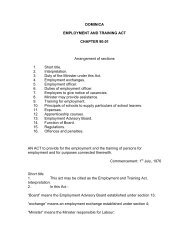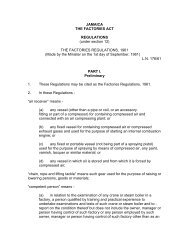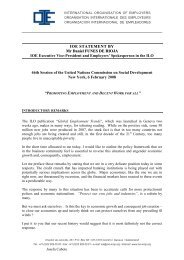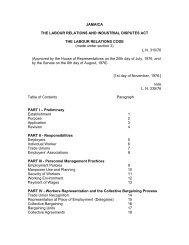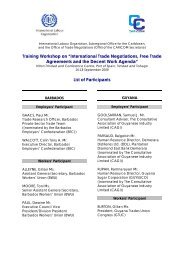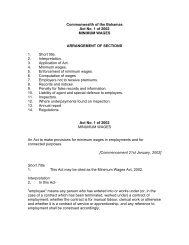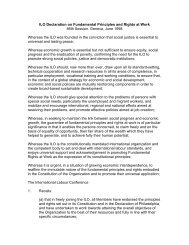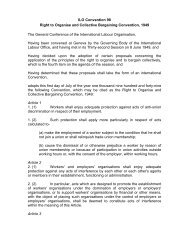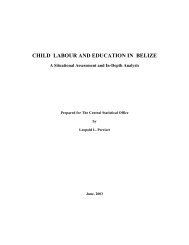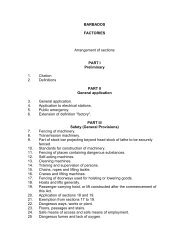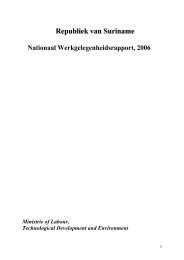ILO REPORT ON CHILD LABOUR IN BARBADOS - International ...
ILO REPORT ON CHILD LABOUR IN BARBADOS - International ...
ILO REPORT ON CHILD LABOUR IN BARBADOS - International ...
Create successful ePaper yourself
Turn your PDF publications into a flip-book with our unique Google optimized e-Paper software.
2. Economic and Social Overview of the Bahamas 1<br />
_____________________________________________________________________<br />
2.1 Geographic Profile<br />
The Commonwealth of the Bahamas is an archipelago of 700 islands located 55 miles<br />
southeast of Florida on the southeastern cost of the United States. The country occupies a<br />
total land mass of 5,382 sq. miles scattered across 80,000 sq. miles of the Atlantic Ocean.<br />
The 2000 Census reported a total population of 303,611 in the Bahamas. Over 95% of the<br />
population lives on seven islands. The two major population centres are Nassau, the capital<br />
which is located in New Providence and Freeport, located on Grand Bahama. New<br />
Providence is the most densely populated island with 2655.4 persons per square mile. The<br />
population of these two islands constituted 69.7% and 15.4% of the total population of the<br />
Bahamas. The other populated islands and cays are called Family Islands. The proportion of<br />
the total population living on the Family Islands declined from 24.56% in 1970 to 16.5% in<br />
1990 and then to 14.9% in 2000.<br />
According to the 2000 census, 86,648 persons are between 5-19 years, representing 28.5%<br />
of the population. Of these, 19.8% are between 5 and 14 years. Females constituted 51.3%<br />
of the general population.<br />
Climate: The climate is tropical marine moderated by warm waters of the Gulf Stream.<br />
Temperatures seldom fall below 60 F (14C) or exceed 90F (29C). This makes the Bahamas<br />
extremely attractive to visitors from cold climates and tourism is a year round industry. The<br />
islands are prone to hurricanes and tropical storms that cause flooding and wind damage.<br />
Communications: The islands have good sea, air and ground transportation links. There are<br />
three sea ports in Nassau, Freeport and Matthew Town (Great Inagua); 60 airports,<br />
commercial transport in major centres, and 2,400km of highways of which 1,400 km are<br />
paved.<br />
Regular and cellular telecommunications services are provided by Batelco, a governmentowned<br />
company and there were over 120,000 hard line telephone subscribers at the end of<br />
2001 and 64,000 cellular subscribers at the end of 2001. Major centres also have Internet<br />
connectivity.<br />
There is universal access to radio through three AM and six FM broadcast stations. National<br />
television coverage is restricted and does not cover all the Family islands but Cable Bahamasa<br />
privately owned TV company and privately-owned satellite dishes provide access to US<br />
cable channels in all the islands. There are also four privately-owned newspapers with<br />
nationwide circulation.<br />
Governance: The Bahamas gained independence from the United Kingdom on July 10 1973<br />
and the country is governed by a parliamentary democracy based on the Westminster<br />
Whitehall model with a Governor General who represents the Queen, a bicameral legislature<br />
including an elected House of Representatives and an independent Judiciary. The Government<br />
is headed by a Prime Minister who is also a member of the legislature. The last elections were<br />
1 Source: Annual Report of the Chief Medical Officer 2000: Draft Report, MOH (2002).<br />
16




